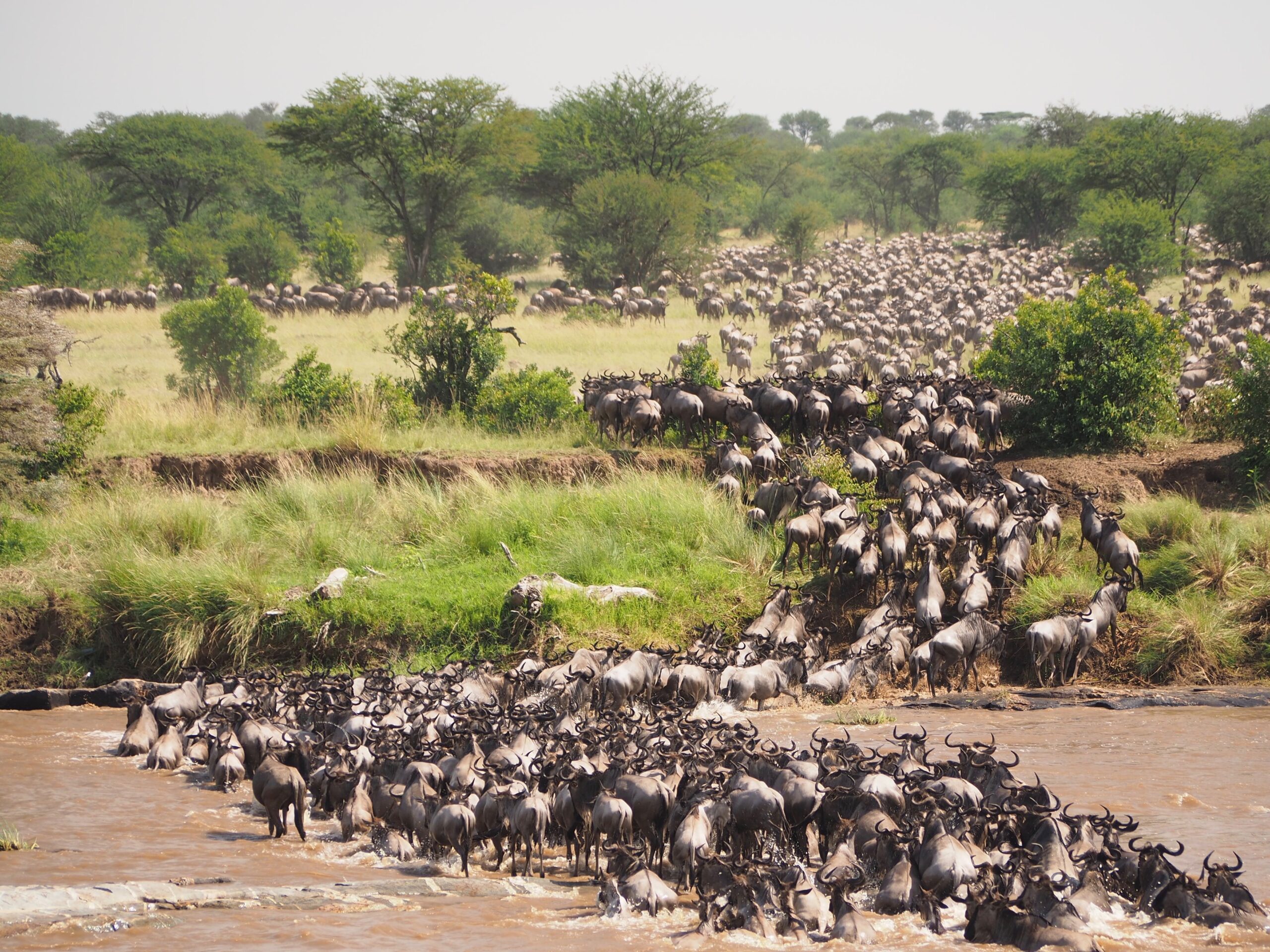
There is a ‘thing’ that happens in East Africa every year and we’ve all watched Animal Planet, NatGeo, David Attenborough docos in horror… it’s called The Great Wildebeest Migration and it is one of the most spectacular natural events on the planet, and recognised as one of the Seven Wonders of the Natural World. Every year, 1.5 million wildebeest, plus zebras and other ‘hanger-on’ers’ make the river crossing journey across the Serengeti National Park in Tanzania and the Maasai Mara National Reserve in Kenya. It is a truly incredible sight and sound as you can Imagine millions of wildebeest and zebras galloping along, pounding the ground in what can only be described as an African drum roll.
One of the most dramatic parts of the migration happens at the river crossing and the Mara River in Kenya is one of the hottest spots for action. When the herds reach the river, they must make a choice – stay hungry and feed on dried grass – or take the plunge into the river where crocodiles are waiting. That of course means there’s no guarantee of making it to the other side – where the grass is greener. And not only are there crocodiles to fear, but where there are large concentrations of wildebeest and zebras, you can bet the other predators are lurking right behind. Lions, cheetahs, and hyenas follow the herds, ready for an easy meal.
So, why do these animals put themselves at very high risk of being eaten by enormous crocodiles that lie in wait in the Mara River, to “get to the other side”? Well … it’s all about the grass! They are what you’d call picky eaters and so they follow the rains which turn the parched grass of the dry season, into the greenest lushest food you ever did see. So, they literally pack their bags and move on to the next green feast.
If you just so happen to get the chance to witness a wildebeest crossing, then you are very privileged! The Great Migration doesn’t run on any planned schedule, it depends on the rain and as we all know, Mother Nature has a tendancy of surprising us when it comes to weather patterns. Generally however, the Migration spectacle usually takes place from June – September every year, and even if you don’t actually see a crossing, the savanna will be teeming with wildlife.
Luckily for our guests, we’ve been providing incredible Wildebeest Migration experiences for quite some time, whether it be as part of a multi-day tour or a specific 3x day migration safari. We go to extraordinary lengths to ensure our guests have the most incredible lifelong memories of their Great Wildebeest Migration experience.
And as we always remind our guests – please remember your responsible tourism and ethical safari practices, and remember that when you go on safari, you are stepping into ‘their’ world. It’s their patch and we are just the very privileged guests.
